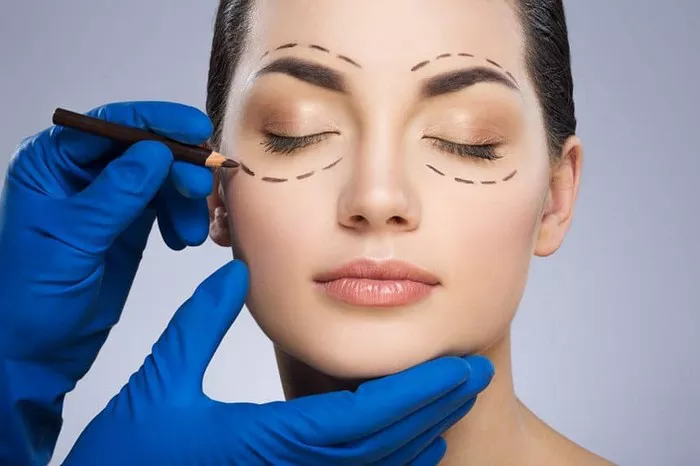Blepharoplasty, commonly referred to as eyelid surgery, is a popular cosmetic procedure aimed at enhancing the appearance of the eyelids. While many people opt for blepharoplasty to address cosmetic concerns, such as droopy eyelids or under-eye bags, there are instances where this surgery is medically necessary to treat specific eye conditions. In this comprehensive guide, we will delve into the world of blepharoplasty, exploring the cosmetic and medical aspects of the procedure and answering the question: Are there any eye conditions required for blepharoplasty?
Understanding Blepharoplasty
Blepharoplasty is a surgical procedure designed to improve the appearance of the eyelids. It can be performed on the upper eyelids, lower eyelids, or both, depending on the patient’s individual needs and goals. This versatile surgery addresses various concerns, including:
Excess Skin: Over time, the skin around the eyes can lose its elasticity, leading to sagging or drooping eyelids.
Puffiness: Fat deposits may accumulate in the upper and lower eyelids, causing a swollen or puffy appearance.
Under-eye Bags: Genetic factors or the aging process can result in the formation of under-eye bags, which can make a person appear tired or older.
Drooping Lower Eyelids: When the lower eyelids droop excessively, they may expose the white of the eye below the iris, potentially causing eye irritation.
Wrinkles and Fine Lines: Blepharoplasty can also address fine lines and wrinkles around the eyes, helping to create a more youthful appearance.
Cosmetic vs. Medical Blepharoplasty
Blepharoplasty can be broadly categorized into two main types: cosmetic and medical. These categories differ in their primary objectives and the conditions they aim to treat.
Cosmetic Blepharoplasty:
Cosmetic blepharoplasty is an elective procedure chosen by individuals seeking to improve their appearance and rejuvenate the look of their eyes. It is typically performed on healthy individuals with no underlying eye conditions. Cosmetic blepharoplasty can provide patients with a more youthful and refreshed appearance, making it a popular choice for those concerned about aging signs around their eyes.
Medical Blepharoplasty:
Medical blepharoplasty is a necessary surgical intervention designed to address specific eye conditions that can impair vision or cause discomfort. This type of blepharoplasty is recommended when excessive eyelid skin obstructs a person’s field of vision, leading to functional limitations. Some of the eye conditions that may require medical blepharoplasty include:
Ptosis: Ptosis is characterized by the drooping of the upper eyelid to an extent where it partially or completely covers the pupil. It can be congenital or acquired and often necessitates surgical correction to restore normal vision.
Ectropion: Ectropion occurs when the lower eyelid turns outward, exposing the inner surface of the eyelid. This can lead to eye irritation and discomfort, making surgical correction essential.
Entropion: In contrast to ectropion, entropion occurs when the lower eyelid turns inward. This condition can cause the eyelashes to rub against the eye’s surface, resulting in irritation and potential corneal damage.
Blepharospasm: Blepharospasm refers to involuntary eyelid twitching or spasms, which can be disruptive and have a significant impact on a person’s quality of life.
Tumors or Growths: Suspicious growths or tumors on the eyelids may require excision and biopsy to rule out malignancy.
The Role of Eye Health Professionals
Determining whether blepharoplasty is necessary, whether for cosmetic or medical reasons, requires a thorough evaluation by eye health professionals. Ophthalmologists and oculoplastic surgeons are the experts who can assess your eye condition and provide guidance on the most appropriate treatment options.
Here is an overview of the typical process involved in this assessment:
Consultation: During the initial consultation, patients discuss their concerns and aesthetic goals with the eye health professional. This is followed by a comprehensive examination of the eyes and eyelids, a review of the patient’s medical history, and an assessment of any underlying eye conditions.
Medical Evaluation: If an eye condition is present and impacting vision or eye health, further diagnostic tests may be required to determine the severity and extent of the problem.
Treatment Plan: Based on the evaluation, the eye health professional will recommend the appropriate treatment, which may include medical management, surgical intervention, or cosmetic blepharoplasty.
Surgical Procedure: If surgery is deemed necessary, the eye health professional will explain the procedure in detail, outlining potential risks and benefits.
Recovery: After the surgery, patients will enter a recovery period during which they must follow post-operative instructions carefully.
Conclusion
Blepharoplasty is a versatile surgical procedure that can be performed for both cosmetic and medical purposes. While cosmetic blepharoplasty focuses on enhancing the aesthetic appearance of the eyes, medical blepharoplasty addresses specific eye conditions that affect vision and eye health. The decision to undergo blepharoplasty should always be made in consultation with an experienced eye health professional who can provide a thorough evaluation and recommend the most suitable treatment option for individual needs. Whether seeking a refreshed appearance or requiring surgical intervention for a medical condition, blepharoplasty can be a transformative and beneficial procedure when performed by skilled professionals.


